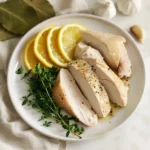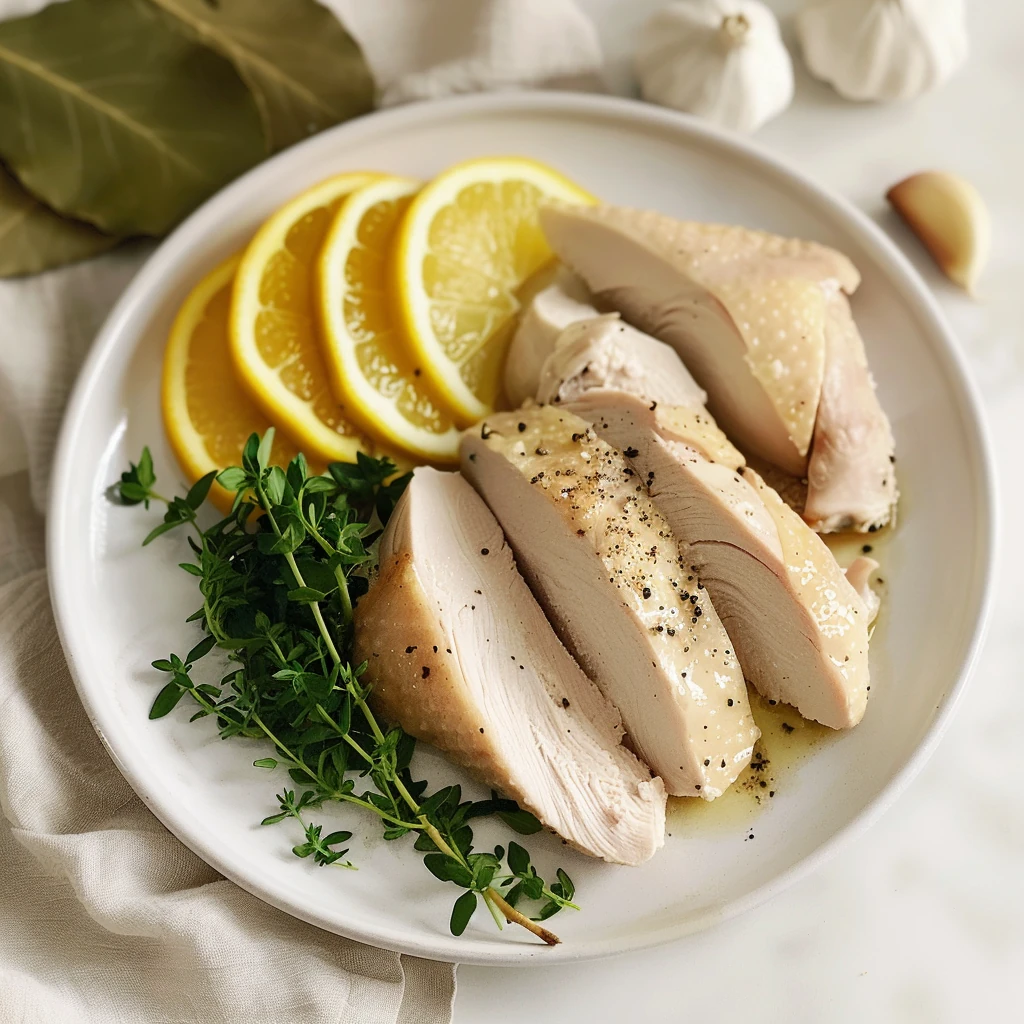How Long to Boil Chicken Breast: The Ultimate Guide for Tender, Juicy Chicken Every Time
If you’ve ever wondered “How long to boil chicken breast?” you’re not alone. Boiled chicken breast is a staple in countless recipes, from quick salads to comforting soups and nourishing weeknight dinners. Perfectly cooked, juicy chicken breast is easy to achieve at home, but knowing the exact boiling time makes all the difference. Whether you’re meal prepping, seeking a healthy protein base, or whipping up a one-pot family meal, boiling chicken breast is a skill every home cook should have in their toolkit. In this comprehensive guide, you’ll learn just how long to boil chicken breast so it turns out moist, flavorful, and ready for any dish. Plus, we’ll share clever ingredient additions, kitchen tips, and storage advice to keep your chicken delicious every time.
Why You’ll Love How Long to Boil Chicken Breast
- Consistent, juicy chicken breast every single time
- Versatile results perfect for myriad dishes—salads, sandwiches, pastas, and more
- No fancy equipment or hard-to-find ingredients required
- A gentle, mess-free cooking method that helps retain maximum moisture
- Easy to customize with your favorite herbs, spices, and aromatics
- Ideal for healthy, protein-packed meal prep
- Foolproof for beginners and a timesaver for experienced cooks
Ingredients for How Long to Boil Chicken Breast
The beauty of boiling chicken breast lies in its simplicity and adaptability. Here’s what you’ll need to create chicken that’s not just cooked, but brimming with flavor:
- 2 boneless, skinless chicken breasts: Choose fresh, high-quality chicken breasts for the juiciest results. You can use fresh or thawed frozen chicken.
- 1 teaspoon salt: Essential for seasoning the meat and enhancing its natural flavor.
- 2 garlic cloves, smashed: These infuse the chicken and broth with subtle warmth and depth.
- 2–3 lemon slices: Fresh lemon brightens the chicken and adds a delicate zest.
- 1 bay leaf: Contributes a gentle, earthy undertone that’s particularly aromatic.
- 4 cups cold water: Use enough water to cover the chicken by about an inch. Starting from cold water helps the chicken cook evenly.
- Optional—fresh thyme or rosemary: Add a sprig or two for extra herby fragrance and taste.
Feel free to scale the quantities up or down depending on how much chicken you’d like to prepare—the proportions above are ideal for two medium chicken breasts. These ingredients not only ensure your chicken is tender, but they also create a light, flavorful poaching liquid that can be repurposed as broth.
Necessary Tools
- Deep skillet or saucepan: The vessel should be large enough to fit your chicken in a single layer and hold water with about an inch covering the meat.
- Lid: For covering the pan during simmering. This helps the chicken cook gently and evenly.
- Meat thermometer: Vital for checking doneness—the internal temperature should reach 165°F (74°C) for safe, juicy chicken.
- Slotted spoon or tongs: For lifting the chicken out of the hot liquid without splashing.
- Cutting board: To rest and slice or shred your cooked chicken breast safely.
- Sharp knife: For clean slicing or chopping after the rest period.
- Fine-mesh strainer (optional): For straining and reserving the poaching liquid if you’d like to use it as a light broth later on.
Equipping your kitchen with these simple tools ensures a smooth process, from prepping to serving.
Ingredient Additions & Substitutions
One of the best things about learning how long to boil chicken breast is the versatility and adaptability of this cooking method. While the classic recipe produces consistently tasty results, you can easily tailor the flavor profile to suit your personal preferences, dietary restrictions, or whatever you have on hand.
- Chicken options: Don’t have boneless, skinless breasts? Bone-in breasts, chicken thighs, or tenders can also be boiled using the same method. Bone-in pieces may require a slightly longer boiling time (up to 25 minutes) to ensure they’re fully cooked but they impart even richer flavor to the broth.
- Aromatics: Swap out or add to the garlic and lemon with:
- Sliced onions or shallots for sweetness
- Fresh ginger or lemongrass for an Asian-inspired twist
- Black peppercorns for a subtle bite
- Crushed coriander or cumin seeds for gentle warmth
- Herbs: If you’re out of thyme or rosemary, experiment with:
- Parsley, dill, tarragon, or cilantro for fresh green notes
- Oregano or marjoram for Mediterranean flair
- Savory depth: Add a splash of soy sauce, Worcestershire, or fish sauce for umami undertones
- Salt alternatives: Season the poaching liquid with sea salt, kosher salt, or a pinch of your favorite all-purpose seasoning blend.
- Vegetables: Drop in carrots, celery, or a halved tomato to boost broth flavor and add nutrients.
Don’t be afraid to experiment! The gentle poaching process means flavors will infuse but never overwhelm the chicken. If you need to avoid garlic, skip it entirely or substitute with aromatics your family enjoys.
For specialty diets:
- Low-sodium variation: Reduce or omit the salt, letting natural aromatics provide flavor.
- Low-FODMAP: Use garlic-infused oil (not whole garlic cloves) or stick to green herbs and lemon for seasoning.
No matter your approach, these flexible ingredient options ensure that your boiled chicken breast is always far from boring.
How to Make How Long to Boil Chicken Breast
Boiling chicken breast is deceptively simple, but a few pro techniques ensure it turns out moist, tender, and flavorful—not rubbery or bland. Here’s your step-by-step guide to perfect boiled chicken breast every time.
Step 1: Prepare the Chicken and Aromatics
Lay the chicken breasts in a single layer at the bottom of a deep skillet or saucepan. Add salt, smashed garlic cloves, lemon slices, bay leaf, and any fresh herbs you’re using around and on top of the chicken.
Step 2: Cover with Cold Water
Pour in enough cold water to completely submerge the chicken by about an inch (about 4 cups for two breasts). Starting with cold water helps the temperature rise slowly, ensuring gentle, even cooking from edge to center.
Step 3: Bring to a Gentle Boil
Set the pan over medium-high heat and bring the water to a gentle boil. You’ll see small bubbles forming without an aggressive rolling boil—this gentle approach keeps the chicken succulent.
Step 4: Simmer and Cover
As soon as the water reaches a gentle boil, reduce the heat to low, cover the pan with the lid, and let the chicken simmer for 12–15 minutes. Avoid removing the lid repeatedly, as this lets heat escape and can slow cooking.
Step 5: Check for Doneness
After 12 minutes, check the internal temperature of the thickest part of each chicken breast with a meat thermometer. You’re aiming for 165°F (74°C)—the safe temperature for perfectly cooked, juicy chicken. If needed, simmer a few minutes longer.
Step 6: Rest, Slice, and Serve
Use tongs or a slotted spoon to lift the chicken breasts from the liquid. Set them on a cutting board and let them rest for 5–10 minutes. Resting helps the juices redistribute for maximum tenderness. Slice, shred, or chop the chicken as desired.
Step 7: Reserve and Use the Broth (Optional)
If you’d like, strain the warm poaching liquid and reserve it as a light chicken broth—it’s delicious as a base for soups or grains.
Serving Suggestions
Knowing how long to boil chicken breast opens up endless meal options! Here are a few ideas for serving:
- Shred and toss into salads, grain bowls, or wraps for a boost of lean protein
- Slice and layer onto sandwich rolls with fresh greens and your favorite spread
- Cube and add to soups, stews, or chili for hearty comfort food
- Top a baked sweet potato or grain bowl with warm sliced chicken, olive oil, and herbs
- Fold into tacos with crunchy slaw and pickled veggies
- Toss with pasta, roasted vegetables, or pan-seared greens for a satisfying dinner
Because boiled chicken breast is so mild and versatile, it’s easy to adapt into global cuisines—think Chinese chicken and rice soups, Mexican chicken enchiladas, or Mediterranean mezze platters.
Pro Tips & Tricks
- Always start with cold water for gentler, more even cooking—this prevents sudden contraction and dryness.
- Don’t overboil! Simmer gently, never at a rolling boil, for optimal tenderness.
- Resting the cooked chicken for at least five minutes lets the meat retain moisture after cooking.
- Use a meat thermometer for perfect doneness—eyeballing leads to dry or undercooked meat.
- Season the poaching liquid generously; the flavor will subtly infuse the chicken.
- Save the poaching broth! It’s perfect for a quick soup, cooking grains, or thinning sauces.
- If you plan to shred the chicken, do so while it’s still slightly warm for the best texture.
- For meal prep, cook multiple breasts at once and store for quick meals all week.
- Add extra aromatics or spices for themed flavor profiles—think curry powder, Italian seasoning, or ginger-scallion.
Storage Instructions
Proper storage is key to enjoying your boiled chicken breast throughout the week:
- Cool cooked chicken breasts to room temperature, then store in an airtight container in the refrigerator for up to 4 days.
- For longer storage, slice, cube, or shred the chicken and freeze in leakproof bags or containers for up to 3 months; thaw overnight in the fridge before using.
- Store any reserved poaching broth in a lidded container for up to 5 days in the fridge, or freeze for up to 3 months.
- To reheat, gently warm slices or shreds in a skillet with a splash of broth or water, covered, over low heat—this preserves moisture and keeps the meat from drying out.
General Information
Learning how long to boil chicken breast is an invaluable kitchen skill. Boiled chicken is a healthy, low-fat, high-protein staple that works beautifully in everything from salads to casseroles. Unlike roasting or grilling, boiling chicken keeps it exceptionally moist and ensures it cooks evenly with minimal hands-on work. This method is ideal for batch cooking and meal prepping, making healthy, flavorful meals accessible and efficient.
The poaching process also extracts nutrients and flavor from the chicken and aromatics into the cooking liquid, resulting in a deliciously light broth that can be used in other dishes—waste not, want not! Plus, the method is forgiving, budget-friendly, and suitable for cooks of every skill level.
FAQs
How long to boil chicken breast if frozen?
If boiling directly from frozen, add 5–8 extra minutes: a total simmer time of 18–22 minutes, checking for an internal temperature of 165°F.
Can you use bone-in chicken for this recipe?
Yes! Bone-in breasts will take slightly longer to cook—aim for 20–25 minutes simmering time, always checking for 165°F for food safety.
Is it okay to skip the aromatics?
Absolutely. While garlic, lemon, and herbs add flavor, you can boil chicken in salted water alone and still get juicy, tender meat.
What’s the best way to shred boiled chicken?
Let the chicken cool slightly, then use two forks or a stand mixer with the paddle attachment for quick, uniformly shredded chicken.
Should the water be boiling before adding chicken breasts?
No—always start with cold water so the chicken cooks gently and evenly, avoiding tough outer layers.
Can I reuse the boiling liquid?
Yes! Strain and use the broth for soups, sauces, cooking rice, or wherever you’d use a light chicken stock.
Conclusion
Mastering how long to boil chicken breast ensures you’ll always have juicy, tender, and delicious chicken ready for any meal. Whether you keep it classic or add your favorite aromatics, this simple method is a kitchen essential. With just a handful of ingredients and a few easy steps, you can prepare healthy, versatile chicken breast to enjoy all week long—no guesswork necessary!
Nutritional Information
Boiled chicken breast is a lean, protein-packed addition to any balanced diet. For one 4-ounce serving of plain boiled chicken breast:
- Calories: 120
- Protein: 25g
- Fat: 2.5g
- Saturated Fat: 0.5g
- Carbohydrates: 0g
- Fiber: 0g
- Sugar: 0g
- Sodium: Varies by added salt
Chicken breast is naturally rich in niacin (Vitamin B3), B6, and selenium—nutrients that contribute to healthy immune and energy systems. Because boiling uses no added fats, it’s a heart-healthy option for anyone looking to cut calories while enjoying high-quality protein. Aromatics like garlic, lemon, and herbs contribute trace vitamins and antioxidants, especially if you enjoy the broth alongside your chicken. For precise nutrition, adjust values based on portion size and any extra ingredients added.
Print
Boil Chicken Breast: How Long to Boil Chicken Breast for Perfect Results
- Total Time: 20 minutes
- Yield: 2
Description
Boil Chicken Breast is a simple and efficient method for preparing juicy, tender chicken every time. Lean chicken breasts are gently simmered in seasoned water with garlic, lemon, herbs, and a bay leaf, infusing delicate flavors into the meat. This approach ensures moist results, ideal for salads, sandwiches, or meal prep. Easy, healthy, and ready in under 30 minutes.
Ingredients
- 2 boneless, skinless chicken breasts
- 1 teaspoon salt
- 2 garlic cloves, smashed
- 2–3 lemon slices
- 1 bay leaf
- 4 cups cold water
- Optional: fresh thyme or rosemary
Instructions
- Place chicken breasts in a single layer in a deep skillet or saucepan.
- Cover with cold water by about 1 inch. Add salt, garlic, lemon slices, bay leaf, and optional herbs.
- Bring to a gentle boil over medium-high heat.
- Once boiling, reduce heat to low, cover, and simmer for 12–15 minutes.
- Check internal temperature with a meat thermometer; it should reach 165°F (74°C).
- Remove chicken and let it rest for 5–10 minutes before slicing or shredding.
- Optionally, strain and reserve poaching liquid for use as a light chicken broth.
Notes
You can substitute chicken breasts with thighs for a richer taste or use boneless, skin-on pieces for extra flavor. Try herbs like parsley or dill if you don’t have thyme or rosemary. Cooked chicken can be made ahead, stored airtight in the fridge for up to 4 days, or frozen for 2 months. If chicken is tough, it’s likely overcooked—use a meat thermometer for accuracy. Leftover broth is great for soups.
- Prep Time: 5 minutes
- Cook Time: 15 minutes
- Category: Main Course
- Method: Boiling
- Cuisine: American

